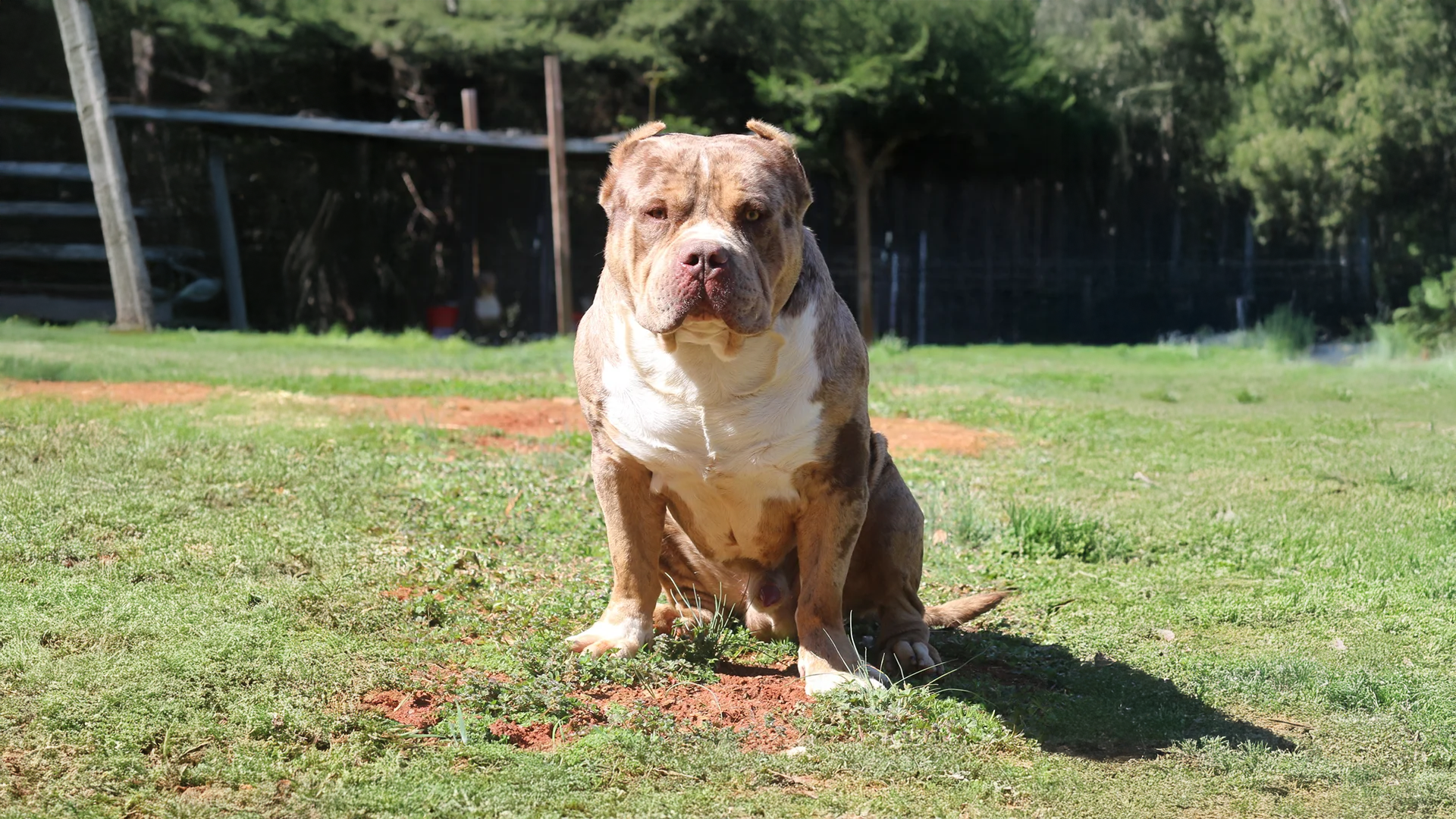The American Bully is a young breed that began in the United States during the 1990s. Because the breed is new, programs have followed different paths. Even so, a handful of kennels shaped today’s Bully by setting clear goals for size, bone, and temperament. Below, you will find an overview of the most influential bloodlines and the breeders behind them. Learning these names will help you pick a pup or plan a future breeding.
Razor’s Edge
Dave Wilson and Carlos Barksdale built Razor’s Edge in Virginia. They crossed select American Pit Bull Terriers and American Staffordshire Terriers to create a shorter, wider dog with blocky heads and heavy bone. Over time, the “Edge” look became the gold standard for a clean, Classic-style Bully.
Key studs: Pretty Boy Floyd (ABKC Champion), Sledge Bammer (XL tri), and Elite Caleb.
Signature look: Compact frame, broad head, tight muscle.
Why it matters: Many kennels still linebreed Razor’s Edge to lock in structure and consistency.
Gottiline
Richard Barajas of West Side Kennels bought a seven-week-old pup named The Notorious Juan Gotty in 1997. Gotty grew into an extreme, wide dog and stamped that look on more than 1,000 offspring. Gottiline dogs carry a dense frame, wide head, and easy-going nature.
Key traits: Massive head, short muzzle, thick bone.
Modern offshoots: Kingpin Line and Mikeline both trace back to Juan Gotty.
Focus: Muscle and width without losing a relaxed attitude.
Remyline
Fabian Chichester founded Remyline around the legendary stud Lowjack’s Remy Martin in 2003. Unlike Razor’s Edge or Gottiline, Remyline centers on one sire. Generations were bred back to Remy to lock his best traits.
Key traits: Thick frame, even temperament, classic blue-fawn coat.
Why it matters: Kennels worldwide still seek Remy blood for its predictability.
Greyline
Brothers Gary and Tony Moore created Greyline under Blue Star Kennels. They favored big square heads, short muzzles, and wide fronts. Greyline roots run deep in many modern programs.
Famous dogs: Raider II, Soulja Boy, Monster, and Gotty (before he moved to West Side).
Breeding style: Careful linebreeding to keep the look tight.
Impact: Greyline introduced head size without sacrificing drive.
Kurupt Blood
Kurupt Blood kennels push the limits on size, specializing in XL, XXL, and even Giant Bullies. Their stud Kurupt Blood Panic boasts a 27-inch head. While some purists debate their style, the line keeps demand high for larger dogs.
Key focus: Extreme mass and head width.
Use with care: Breeders often outcross Kurupt Blood to maintain sound movement.
Other Notable Programs
Several smaller kennels have made a mark by refining specific traits:
| Bloodline / Kennel | Noted For |
|---|---|
| Able Pawz | Wide fronts and clean bite |
| Camelot | Thick frame and steady nerves |
| Dax Line | Short back and heavy girth |
| Iron Man | Dense bone on an XL frame |
| Watchdog | Classic game-dog stamina in a thicker package |
Each line offers something unique. Smart breeders study pedigrees, match strengths, and avoid doubling up on faults.
Choosing the Right Blood for Your Yard
Define your goal. Decide if you want a Classic, XL, or Extreme look.
Study pedigrees. Look for proven producers, not just famous names.
Visit kennels. Meet the parents and check health testing.
Plan ahead. If you breed, select mates that balance each other’s weaknesses.
At Crumps Bullies, we blend top lines to produce pups with steady temperaments, strong bone, and balanced frames. We keep puppies with us until they meet health milestones, then place them in screened homes or show programs.
Knowing the History
The American Bully scene moves fast, yet the bloodlines above keep guiding the breed. Razor’s Edge set the foundation, Gottiline pushed width, Remyline proved linebreeding strength, Greyline delivered head size, and Kurupt Blood stretched the XL market. Knowing these roots helps you choose a pup that fits your vision – whether you want a family companion, a show contender, or the future cornerstone of your kennel.
